Difference Between Over Easy and Over Medium Eggs
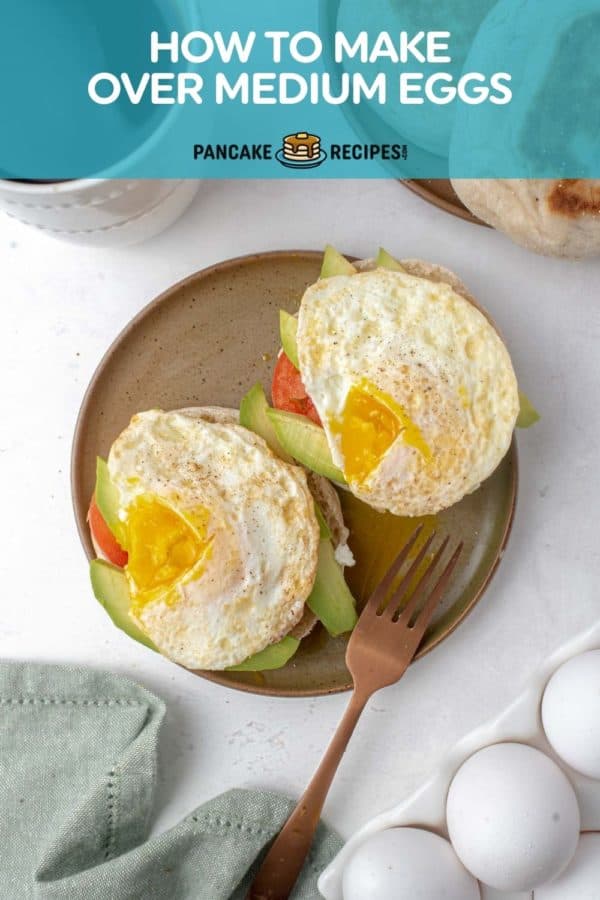
Learn how to make perfect over medium eggs in under 5 minutes! Enjoy an egg over medium with a cup of coffee or with a side of avocado toast, pancakes, or bacon!
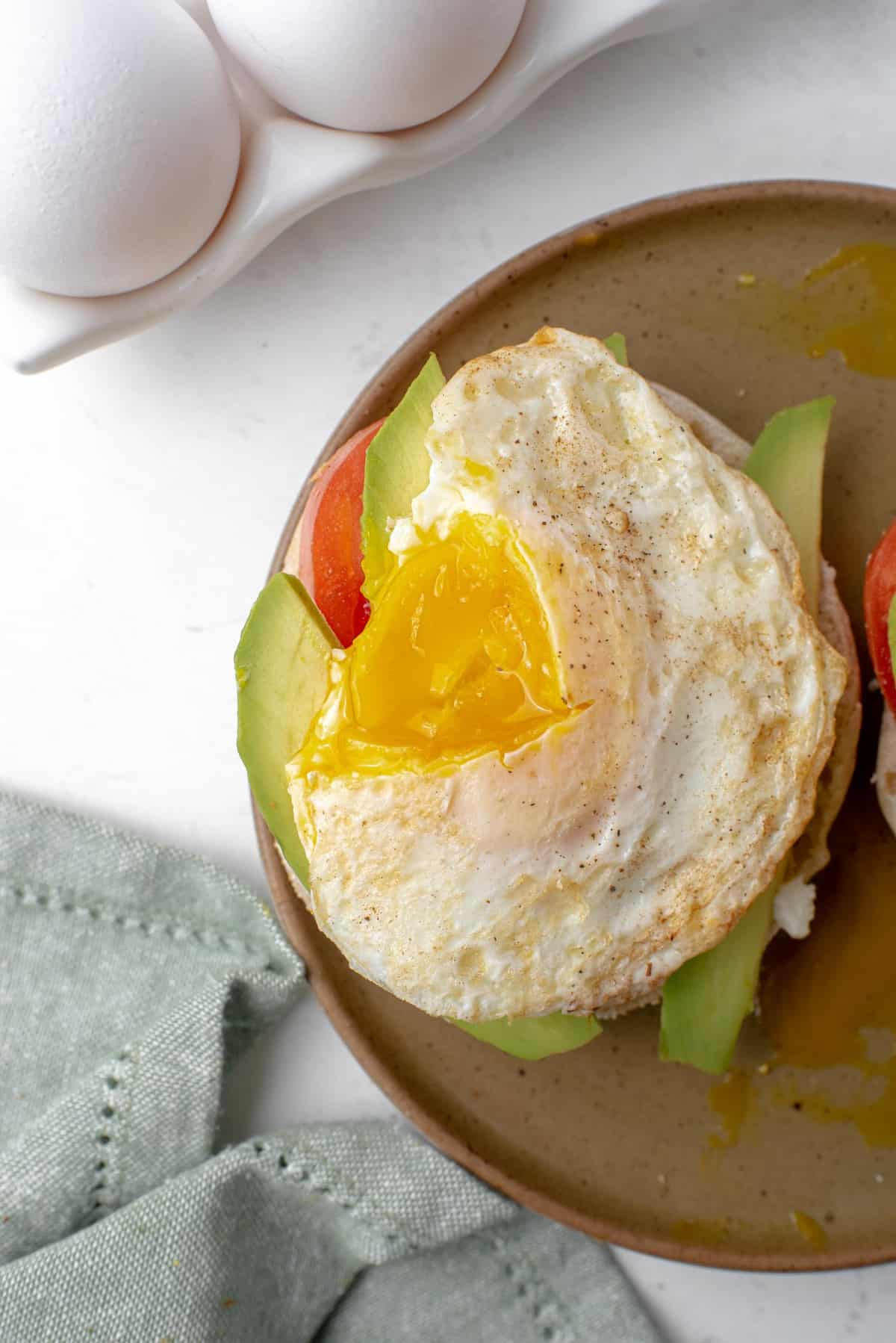
Remember when you were a kid and you thought the only way to eat eggs was scrambled? As your horizons expand, you come to learn that there are so many ways to cook eggs! You can have eggs every day prepared in a different way each day of the week.
And why not eat eggs every day? They are high in protein, have tons of essential amino acids, and are loaded with vitamins and minerals. This easy tutorial will teach you one of the easiest ways to prepare eggs: fried over medium.
- 1 About this recipe for over medium eggs
- 2 What are over medium eggs?
- 3 What you need
- 4 How to make an over medium egg
- 5 FAQs
- 6 The difference between over easy, medium, and hard eggs
- 7 How to make these eggs your own
- 8 Storage Suggestions
- 9 Reheating Tips
- 10 More savory breakfast recipes
- 11 Get the Recipe: How to Make Over Medium Eggs
About this recipe for over medium eggs
Have you ever tried to make a poached egg, like maybe for eggs Benedict? Or maybe a sunny side up egg? Have you ever attempted over easy, over medium, or over hard, only to have them scrambled anyways because you could never get the steps quite right or they stuck to the pan?
That is exactly why this recipe for over medium eggs is so helpful! Getting a perfectly fried egg with a barely runny center is easier than you think, and this simple guide will get you there. You'll be able to make restaurant-style eggs for a fast, healthy, high-protein breakfast anytime!
What are over medium eggs?
Over medium eggs are one version of a fried egg. The egg gets cracked into a pan to cook on one side, and then flipped (hence the "over" portion of the name) to cook for just long enough so that the yolk is no longer super runny.
The "medium" refers to how cooked the yolk is. The consistency of it should be jam-like and may have a slight jiggle to it. Compare that to "over easy" where the yolk is still runny, or "over hard" where the yolk is completely cooked.
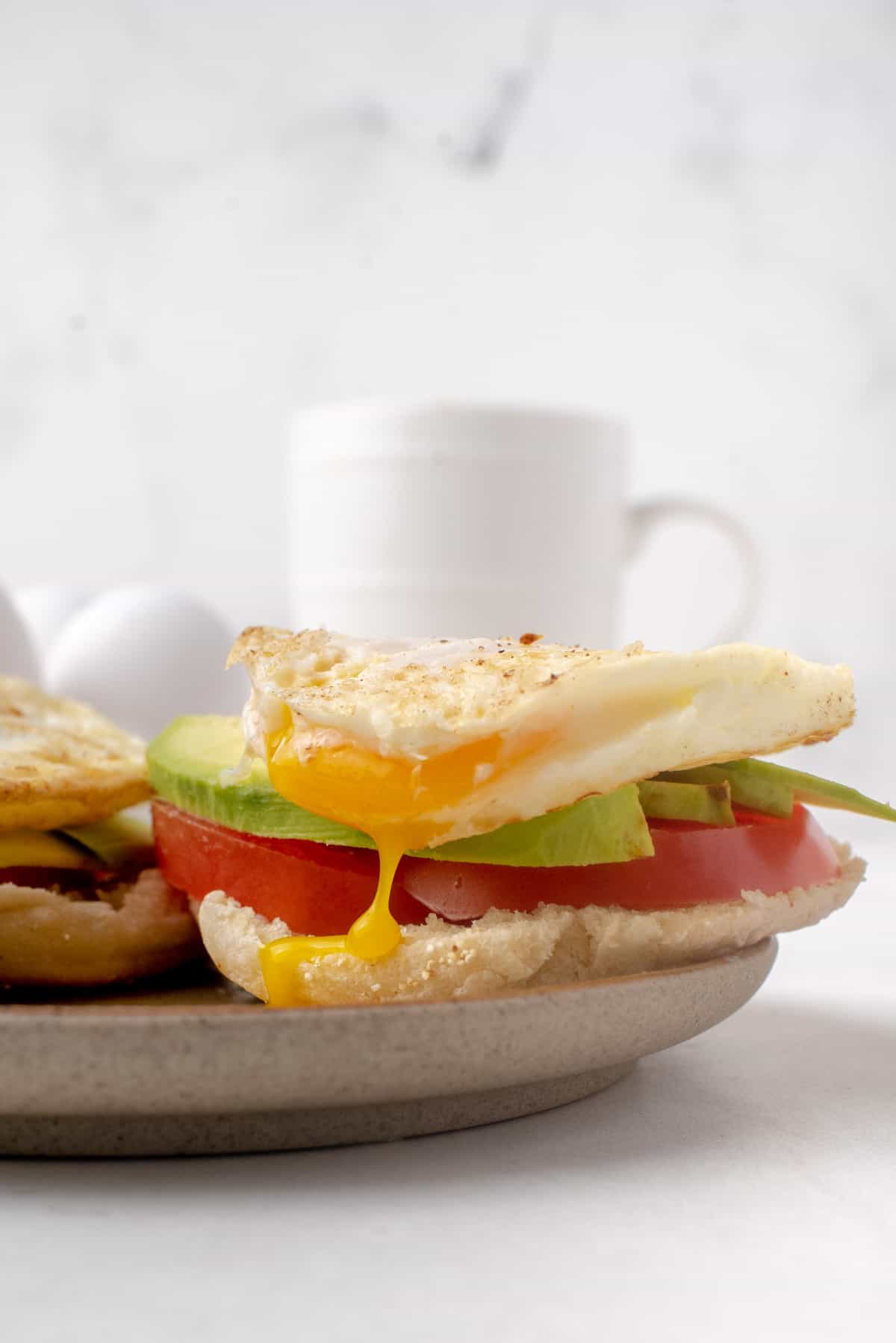
What you need
- Eggs – You'll need 2 eggs for this recipe but you can make as many as you'd like. The fresher the eggs, the better. In fresher eggs, the egg whites are firm and will hold their shape rather than running all over the pan. Eggs that aren't quite so fresh are perfect for making scrambled or hard-boiled eggs.
- Butter – Butter will create a nonstick surface so you'll be able to easily flip the eggs. Olive oil, avocado oil, or ghee will also work.
- Salt & Pepper – Salt and pepper for seasoning is all you really need; however, additional seasonings can be added.
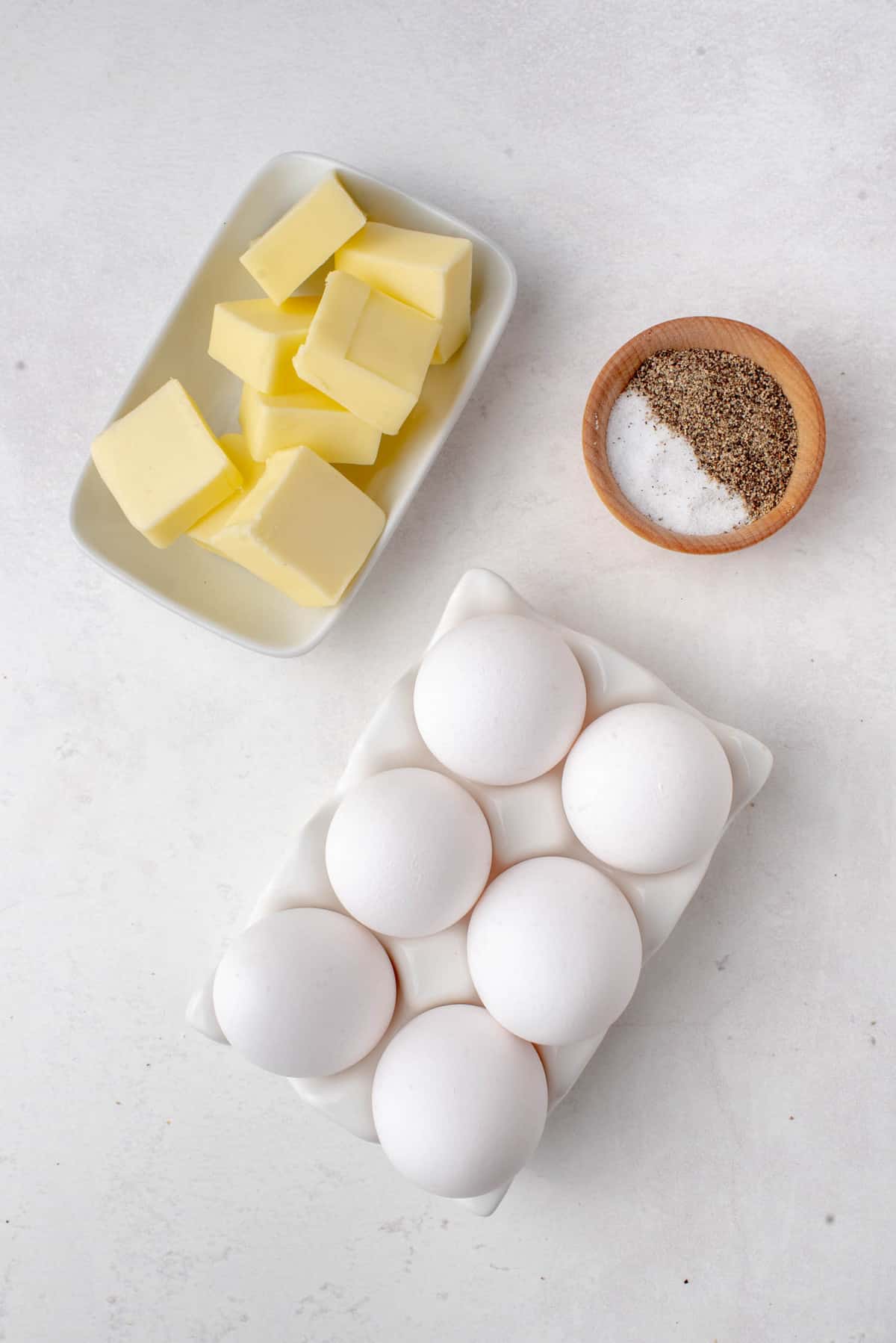
How to make an over medium egg
TIP: If you're worried about shells falling into the pan, try cracking the egg into a bowl first. That way you can fish out any shells, and gently pour the egg onto the skillet without breaking the yolk!
Heat a small nonstick skillet over medium-low (closer to low than medium) heat. Add butter.
When the butter starts to melt and bubble, swirl it around the pan. Add eggs, being careful not to break the yolks. Season with salt and pepper.
Cook for 2-3 minutes or until the whites of the eggs are mostly firm. The yolk will still be runny at this point.
Use a thin spatula to carefully flip the egg and cook for 90 seconds more, or until the yolk has desired firmness. If you jiggle the pan and the yolk doesn't move much, it's probably done.

For an over-medium egg, it should look jam-like and be barely runny. Keep an eye on it because it can go from over medium to over hard very quickly!
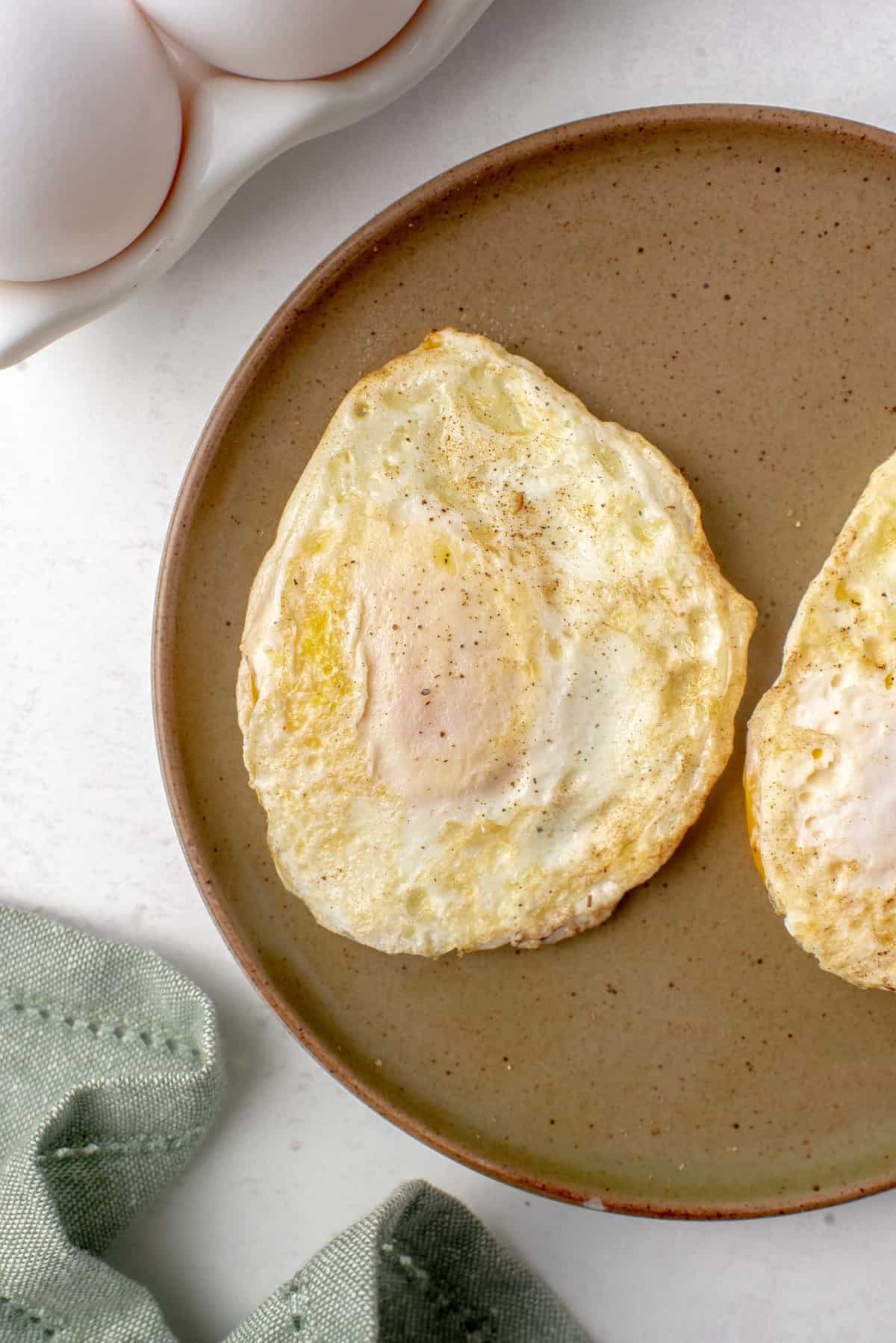
FAQs
What is the difference between over easy and over medium eggs?
The difference is a matter of about 60 seconds. Up until the fried egg gets flipped, the eggs are the same. Once flipped, over easy eggs will only need about 30 seconds to be done. The egg yolks will still be runny and there will be a thin layer of egg white cooked over the yolk. Over medium will stay on about a minute longer, and the yolk will cook to a thicker, custard-y consistency.
Is it ok to eat runny egg yolk?
It is recommended that children under 5 do not consume runny egg yolk because of the slight risk of the eggs being contaminated with salmonella. About 1 in every 20,000 eggs is contaminated (according to the CDC). So, it's all about personal choice. We've never had a problem with soft cooked eggs and will continue to enjoy all kinds of eggs. If runny egg yolks aren't your thing, keep yours on a little longer and make them over hard.
The difference between over easy, medium, and hard eggs
The best way to demonstrate the difference is with an image! See the image below for a visual of what each egg looks like. If words are more your thing, here is a description of each type of egg:
- Over Easy: Egg is flipped and cooked on both sides, but the yolk is still completely runny.
- Over Medium:Egg is flipped and cooked on both sides. Yolk is slightly runny in the center but mostly cooked. Some people call this a "jammy" yolk since it has the consistency of jam.
- Over Hard:Egg is again flipped during cooking, and this time it is cooked long enough to cook all the way through. The yolk will be similar to what you see in a fully cooked hard boiled egg.
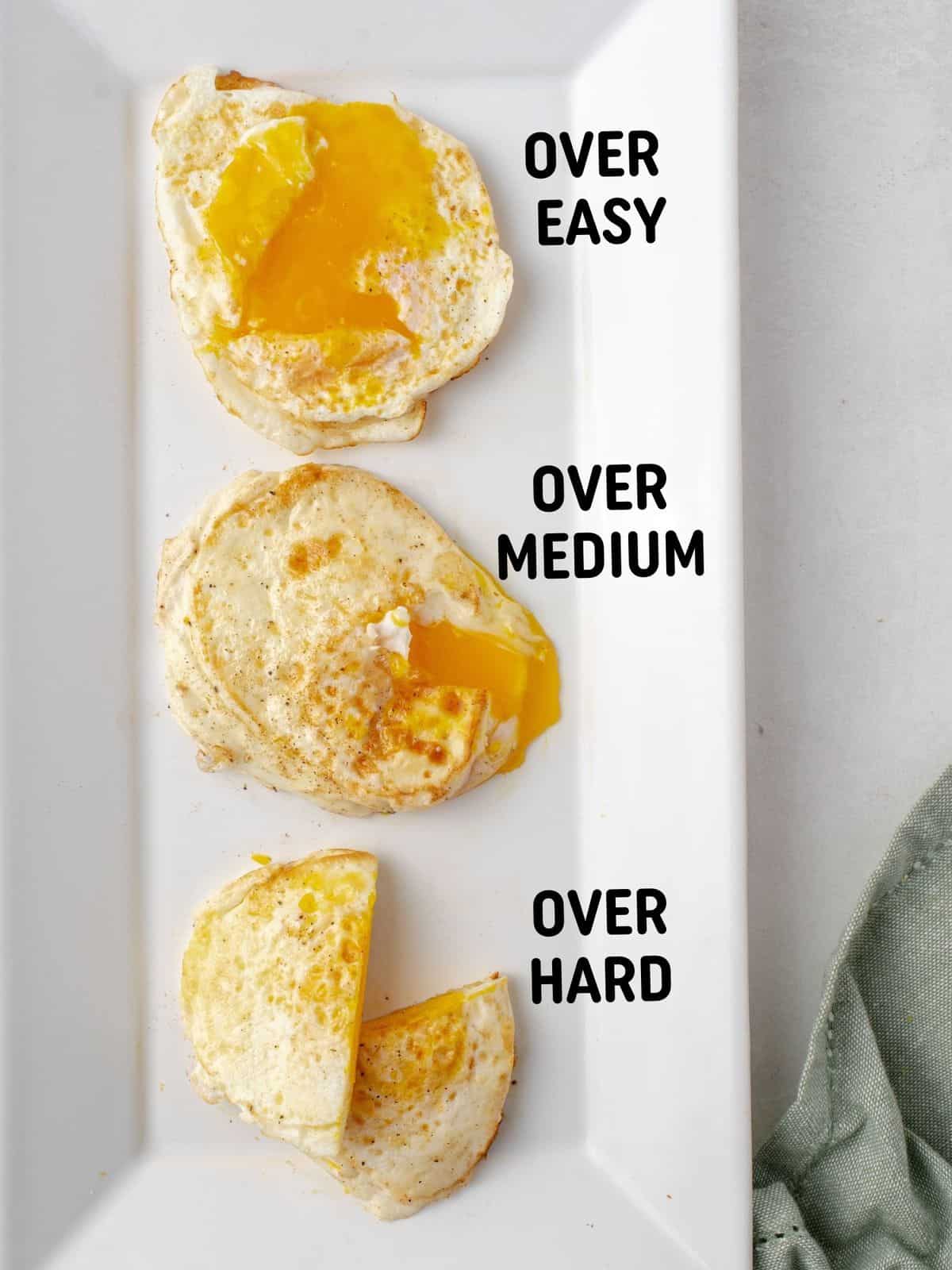
How to make these eggs your own
- Enjoy over medium eggs on avocado toast.
- Keep things classic and make them part of a breakfast that includes a side of hash browns or mashed potato pancakes and bacon.
- Pancakes are always a good idea. Try an egg on the side of a stack of light and fluffy Greek yogurt pancakes.
- Serve with any of your favorite oats, including a warm bowl of oatmeal, apple cinnamon baked oatmeal, or peanut butter and jelly baked oatmeal.
- Season the eggs to your liking. Try a sprinkling of red pepper flakes for heat, or everything bagel seasoning for a little garlic and onion flavor. Sprinkle on Parmesan cheese, and serve topped with a pinch of paprika.
- When planning to serve a crowd for a special occasion brunch, set up a fried egg station! Let everyone fry their egg exactly how they like it. Now that you're a professional and know how to make over easy, over medium, and over hard eggs, you can guide them. Don't forget to pass around the mimosas while you're at it! Or set up a mimosa bar too!
Storage Suggestions
Fried eggs are best served right away, so we recommend only making the number of eggs you need. If you do happen to have uneaten fried eggs, they can be kept stored in an airtight container in the fridge for up to 3 days.
Reheating Tips
Heat leftover fried eggs in a skillet over low heat until warmed through. Flip halfway. You could also use the microwave for 20-second intervals. They will heat up quickly either way.
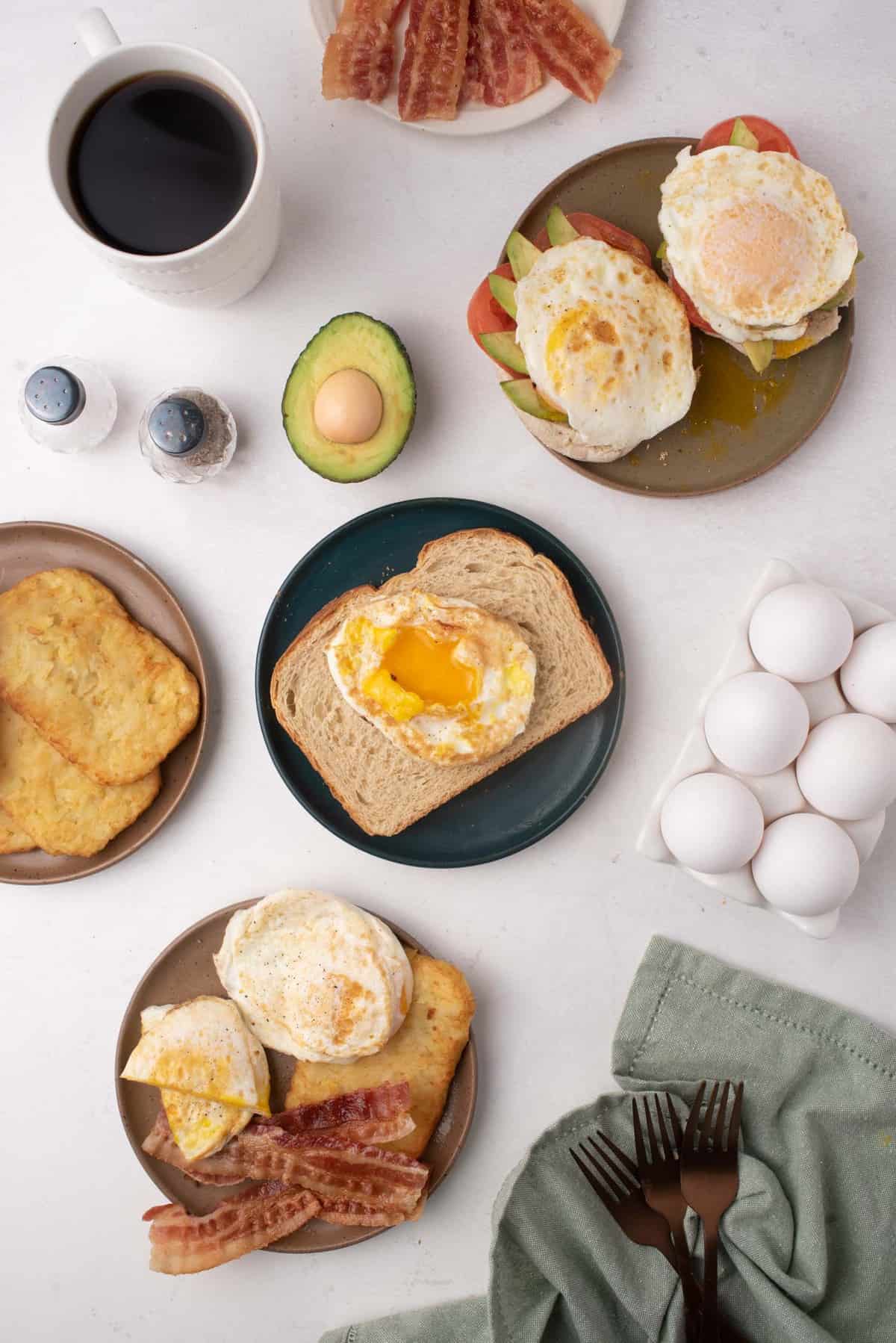
More savory breakfast recipes
- Bacon Jam
- Bacon Pancakes
- Breakfast Nachos
- Caprese Avocado Toast
- Pesto Eggs
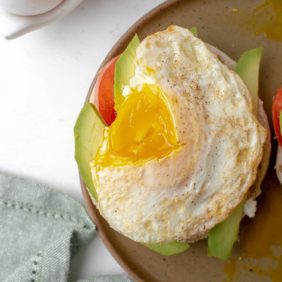
- 2 eggs (the fresher the better)
- 1 tablespoon butter, ghee, olive oil, or avocado oil
- salt and pepper to taste
Prevent your screen from going dark
-
Heat a small nonstick skillet over medium-low (closer to low than medium) heat. Add butter. When butter starts to melt and bubble, swirl it around pan. Add eggs, being careful not to break the yolks. Season with salt and pepper.
-
Cook for 2-3 minutes or until the whites of the eggs are mostly firm. The yolk will still be runny at this point.
-
Use a thin spatula to carefully flip egg and cook for 90 seconds more or until yolk has desired firmness – for an over-medium egg, it should look jammy and be barely runny. If you jiggle the pan and the yolk doesn't move much, it's probably done. But keep an eye on it because it can go from over medium to over hard very quickly.
- If you're not a pro at cracking eggs, that's okay! Crack them in a bowl before adding them to the pan. It's easier to fish out any shells that way, and easier to add them to the pan without breaking the yolks.
- If desired and you have a good nonstick pan, you can use less butter/oil.
Serving: 2 eggs , Calories: 226 kcal , Carbohydrates: 1 g , Protein: 11 g , Fat: 20 g , Saturated Fat: 10 g , Polyunsaturated Fat: 2 g , Monounsaturated Fat: 6 g , Trans Fat: 1 g , Cholesterol: 357 mg , Sodium: 225 mg , Potassium: 125 mg , Sugar: 1 g , Vitamin A: 825 IU , Calcium: 53 mg , Iron: 2 mg
torkelsonwasee1983.blogspot.com
Source: https://pancakerecipes.com/how-to-make-over-medium-eggs/
0 Response to "Difference Between Over Easy and Over Medium Eggs"
Post a Comment